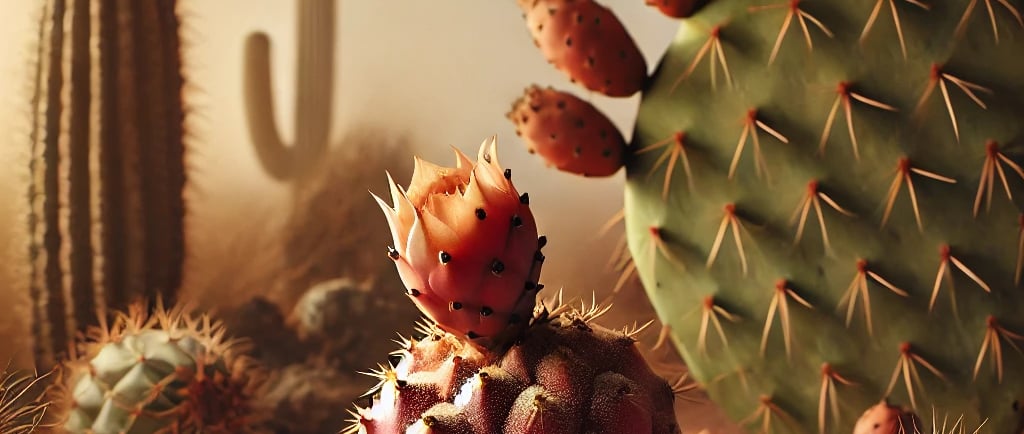The History of Prickly Pear Seed Oil: From Ancient Origins to Modern Trends
Prickly pear seed oil, also known as "plant gold," is today a star in the world of natural cosmetics. Yet behind its contemporary prestige lies a rich history that spans continents and centuries. Let’s explore the fascinating origins of this exceptional oil.


A Plant from Elsewhere
The cactus Opuntia ficus-indica, from which prickly pear is derived, is native to Central America, primarily Mexico. This plant was already cultivated by pre-Columbian civilizations, such as the Aztecs, who used it for its nutritious fruits, medicinal properties, and as a natural dye. The Aztecs nicknamed this cactus "nopalli," and its fruits were considered a sacred food.
The Arrival in North Africa
It was during the European colonization in the 16th century that the cactus was introduced to the Mediterranean regions, including Morocco. The Spanish and the Portuguese transported this resilient plant across the Atlantic, where it found an ideal environment to thrive in the arid regions of the Maghreb.
In Morocco, prickly pear quickly took root, especially in semi-desert areas like the Souss-Massa and Anti-Atlas regions. It became a central element of the local ecosystem, providing fruits for food, fodder for livestock, and a precious oil extracted from the seeds.
An Ancient Use
From its introduction in Morocco, prickly pear became an integral part of the daily practices of rural communities, particularly among the Amazigh (Berbers). Women used the seeds to produce an oil with hydrating and protective properties, ideal for skin and hair in dry and sunny environments.
Traditionally, this artisanal oil was used:
To nourish and protect the skin against extreme climatic conditions.
As a natural remedy for irritations and burns.
In hair care, to soften and strengthen the hair.
A Treasure Rediscovered in the 21st Century
For centuries, prickly pear seed oil remained a well-kept secret, used mainly by local populations. It was only at the beginning of the 21st century, with the growing interest in natural and sustainable cosmetics, that this oil began to attract international attention.
Scientific studies have confirmed its unique benefits:
An exceptional vitamin E content (150% higher than argan oil).
A richness in essential fatty acids that promote skin regeneration.
Plant sterols with anti-inflammatory and protective properties.
These discoveries propelled prickly pear seed oil to the forefront of cosmetic trends, making it a key ingredient for premium brands.
Preserved Craftsmanship
Today, in Morocco, the extraction of prickly pear seed oil remains an artisanal process. Local cooperatives, often composed of women, hand-harvest the fruits, extract the seeds, and then cold-press them to ensure a pure and natural oil. This ancestral know-how is a pillar of sustainable development, providing economic opportunities for rural communities while preserving local ecosystems.
In Conclusion
Prickly pear seed oil carries within it the story of a journey through time and cultures. From its Aztec roots to its adoption by the peoples of Morocco, it embodies the richness of a natural and human heritage. By choosing this oil, you support not only your well-being but also a centuries-old legacy and practices that respect our planet.
Discover this history in every drop.

